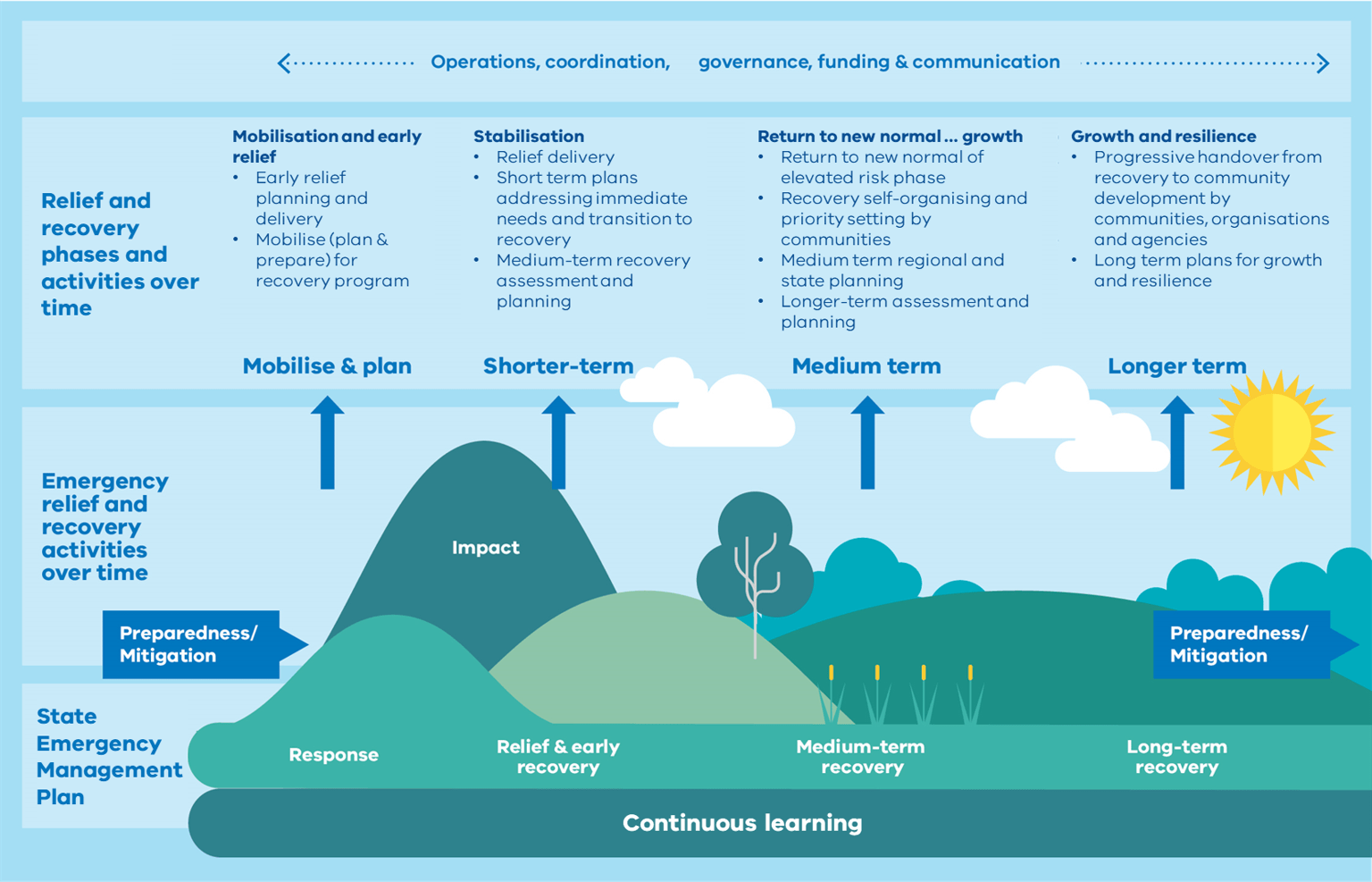Recovery is a long process requiring planning in stages across multiple levels. The phases include:
- Mobilise and plan: Planning and preparing for recovery begins immediately.
- Shorter term: 3 months +/-. This is the stabilisation phase when immediate needs are addressed while medium term recovery assessment and planning is completed, and activities progressively transition from emergency response to recovery.
- Medium term: 12 months +/-. Further assessment and planning is underway, especially at a local community level, while medium to long-term recovery activities start.
- Longer term: 3 to 5 years. Progressive handover from ERV to local communities, organisations and agencies; and long-term plans for growth and resilience.
These phases work with consideration and connection to place-based systems and processes that support Victorian Aboriginal communities every day. Aboriginal community-controlled organisations (ACCOs) and Traditional Owner corporations (TOCs) are leading this work in their communities.
ACCOs are the main providers of health and community services in their respective communities, while Traditional Owner corporations represent the cultural rights and interests of Traditional Owners in their area or Country. Traditional Owner corporations’ responsibilities include holding statutory functions and high-level agreements the Victorian Government as decision-makers on behalf of Traditional Owners in their Country.
ERV coordinates with ACCOs and TOCs to ensure Aboriginal communities are central to recovery decisions about their communities and to respect the cultural rights and practices specific to the Country impacted by emergencies. The leaders and staff of these community-controlled organisations are best place to inform what services and responses will work in their communities.
Key to success across the phases is targeted and planned approaches at the preparedness and mitigation phase that consider each communities’ unique circumstances. This enables ERV to elevate, support and resource Aboriginal community-led processes in broader recovery efforts across the recovery phases.
Updated
